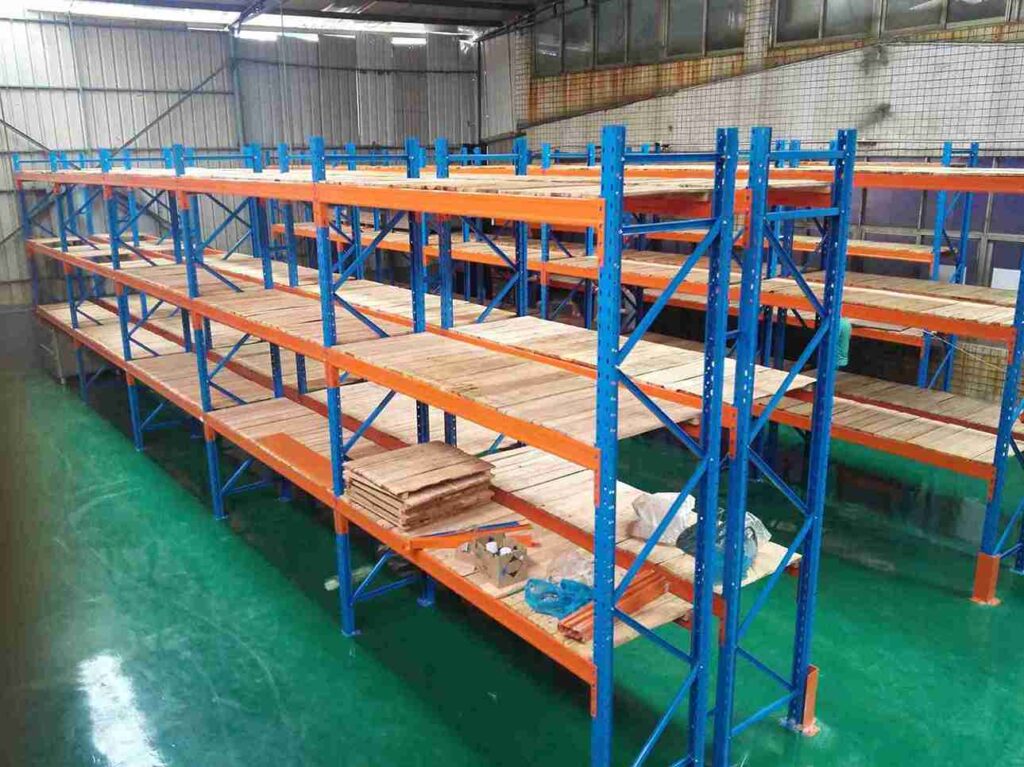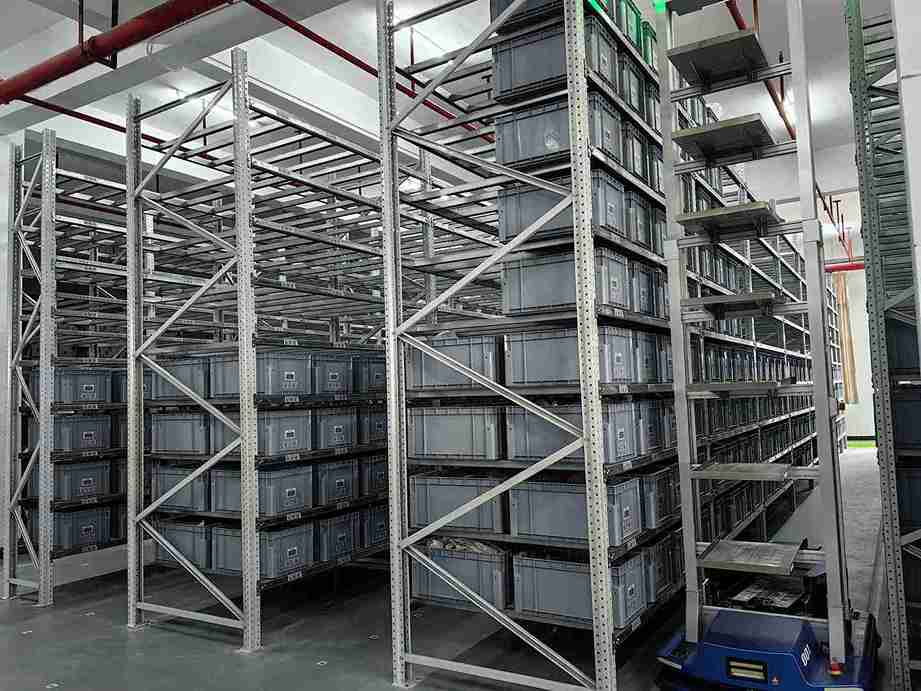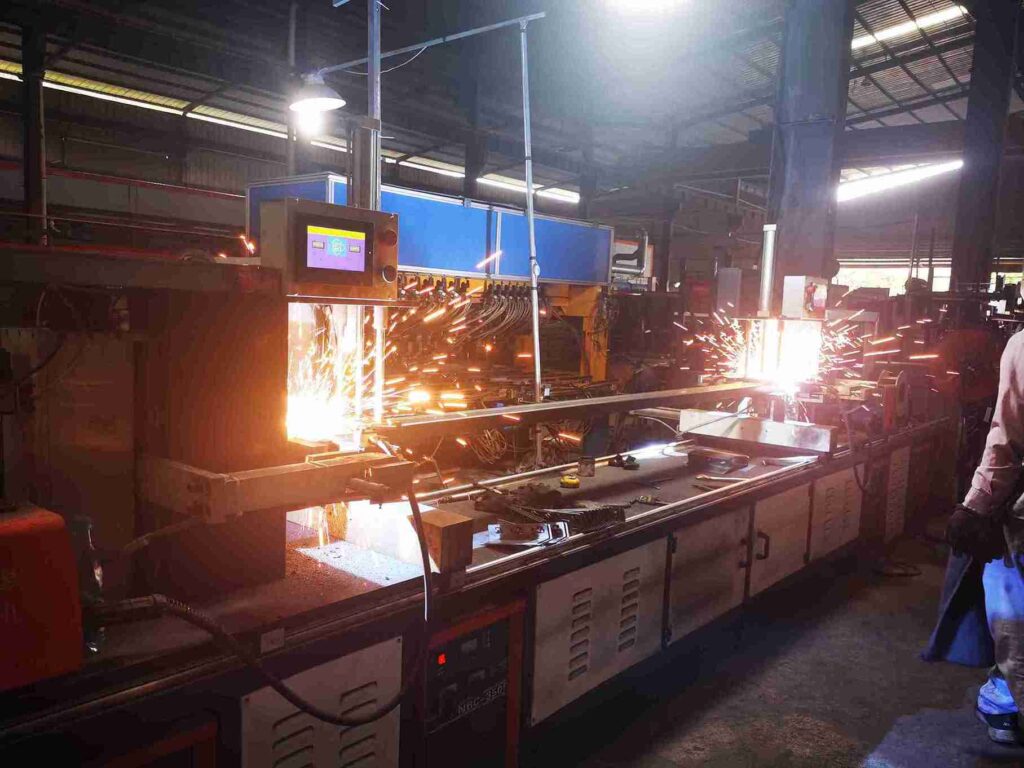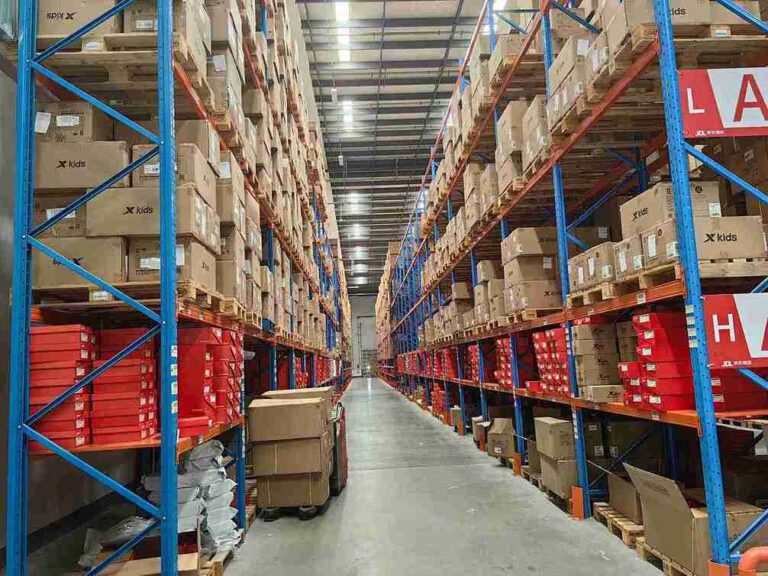📐 "First 50 Enterprise Queries Get Custom 3D Warehouse Design" Plan

The Definitive Guide to Automated Eco-Friendly Racking for Cold Storage & High-Density Warehouses
In the high-stakes arena of global supply chains, a silent revolution is unfolding within the four walls of the modern warehouse. The convergence of acute operational pressures and urgent corporate sustainability mandates has created a paradigm shift, pushing logistics managers to seek solutions that are not only smarter and faster but also fundamentally greener.
At the epicenter of this transformation is automated eco-friendly racking, a sophisticated integration of intelligent automation and sustainably engineered storage structures. This is not merely an incremental improvement but a complete re-engineering of storage philosophy, particularly for the most demanding environments like cold storage and high-density warehouses.
This comprehensive guide delves deep into why eco-friendly racking, when seamlessly paired with automated storage and retrieval systems (AS/RS), represents the most strategic investment a logistics-dependent business can make today. It explores how this synergy delivers unparalleled density, radical energy efficiency, and a robust foundation for a sustainable, profitable future, making the traditional warehouse model obsolete.

The Unsustainable Legacy: Why Conventional Warehousing is a Costly Liability
The limitations of traditional wide-aisle racking systems, powered by fossil-fuel forklifts, are no longer just inefficiencies; they are significant liabilities that impact the bottom line and the planet.
The Cold Storage Crisis: Energy Drain and Structural Degradation
Cold storage facilities operate on a knife’s edge, where energy consumption is the single largest operational expense. Conventional open-rack layouts, with their wide aisles designed for forklift navigation, create massive volumes of air that require constant, energy-intensive refrigeration. Every door opening precipitates a costly exchange of cold and warm air, forcing compressors to work overtime. This model is environmentally and financially punitive.
Furthermore, the corrosive, low-temperature environment accelerates the degradation of standard racking, leading to rust, material fatigue, and heightened safety risks. The very infrastructure meant to support the operation becomes a point of failure, requiring frequent maintenance and premature replacement.
The High-Density Dilemma: Wasting the Most Valuable Asset—Space
In logistics, cubic space is a premium currency. Traditional storage solutions, with their reliance on maneuverable forklifts, inefficiently utilize this vertical asset, leaving a significant portion of a facility’s airspace empty. This underutilization forces companies to lease or build larger facilities than necessary, incurring exorbitant real estate costs.
The problem extends beyond mere storage; longer travel distances for order-picking directly inflate labor costs and slow down throughput, creating a bottleneck that can cripple an entire supply chain during peak demand. The search for a solution inevitably leads to the concept of high-density eco-friendly racking, which is engineered to solve this spatial puzzle.

Deconstructing the System: The Core Components of Automated Eco-Friendly Racking
A state-of-the-art automated eco-friendly racking system is a holistic ecosystem, where each component is purpose-built for performance, durability, and minimal environmental impact. Understanding these components is key to appreciating the system’s transformative potential.
The Sustainable Backbone: Engineering the Green Racking Structure
The physical racking is the foundation upon which everything is built. Modern eco-friendly racking is a feat of engineering that prioritizes sustainability at every stage of its lifecycle:
Advanced Material Science: Utilizing High-Strength, Low-Alloy (HSLA) steel, manufacturers create racking components that are significantly stronger and lighter than conventional alternatives. This reduction in weight translates to less raw material consumption per unit of storage capacity and a lower carbon footprint in manufacturing and transportation.
Superior Corrosion Protection: In harsh environments like cold storage, standard paint is insufficient. The industry standard for eco-friendly racking is hot-dip galvanization—a process that creates a long-lasting, recyclable zinc coating. For less demanding applications, non-toxic, chrome-free powder coatings are used, which are applied without releasing volatile organic compounds (VOCs) into the atmosphere.
Design for Circularity: True eco-friendly racking is designed for disassembly, reconfiguration, and ultimate recyclability. This “cradle-to-cradle” approach ensures that at the end of its long service life, the material can re-enter the manufacturing stream, drastically reducing industrial waste.
The Intelligent Muscle: Automation That Breathes Life into Racking
The static eco-friendly racking structure is activated by a layer of sophisticated automation, creating a dynamic, high-throughput storage machine.
Automated Storage and Retrieval Systems (AS/RS): These computer-controlled cranes or shuttles operate within the narrow aisles of the eco-friendly racking, retrieving and storing loads with sub-millimeter precision. This eliminates the need for wide aisles and the carbon-emitting forklifts that use them.
Pallet & Mini-Load Shuttles: For ultra-high-density applications, autonomous shuttle cars operate on rails within the racking levels, creating a dense, buffer-controlled storage system. This technology is ideal for maximizing the storage density of eco-friendly racking.
AGVs and Autonomous Mobile Robots (AMRs): These robots serve as the connective tissue, transporting goods from the interface points of the automated eco-friendly racking system to other operational zones, completing a seamless, end-to-end automated workflow.
The Multifaceted Return on Investment: Where Sustainability Meets Profitability
The investment in an automated eco-friendly racking system delivers a compelling ROI that is measured not just in financial terms, but also in operational resilience and environmental impact.
Revolutionizing Cold Chain Energy Dynamics
The integration of automated eco-friendly racking with AS/RS technology fundamentally alters the energy equation of a cold storage facility.
Aisle Volume Minimization: By reducing aisle widths from over 3.5 meters to as little as 1.2 meters, the automated eco-friendly racking system drastically cuts the volume of refrigerated airspace. This directly reduces the load on refrigeration systems.
Controlled Environment: Minimizing human entry and integrating rapid-door systems slashes the thermal loss from air exchange. The eco-friendly racking enclosure itself acts as a more sealed and efficient thermal barrier.
Temperature Zone Optimization: In some cases, the reduced human presence allows for operational adjustments, such as marginally higher storage temperatures in specific zones of the eco-friendly racking, where product integrity allows. Each degree Celsius saved can translate into a significant reduction in energy consumption.
The cumulative impact of an automated eco-friendly racking system in cold storage can lead to a staggering 30-50% reduction in energy usage for refrigeration—a direct and powerful cost-saving and sustainability achievement.
Achieving Unprecedented Storage Density and Operational Velocity
The primary mechanical advantage of high-density eco-friendly racking is its ability to maximize every cubic foot of available space.
Cube Utilization Mastery: By building higher and using narrow or zero-aisle configurations, automated eco-friendly racking systems can increase storage capacity by 80-100% within the same building footprint. This defers the need for costly expansion or new construction.
Non-Stop Operation: The automation component within the eco-friendly racking system operates 24/7, unimpeded by shifts, breaks, or labor shortages. This constant throughput accelerates order cycles and improves asset turnover.
Flawless Inventory Integrity: With every movement tracked via barcode or RFID within the eco-friendly racking matrix, inventory accuracy approaches 100%. This eliminates costly shipping errors, reduces shrinkage, and provides perfect data for supply chain planning.
The Expansive Definition of “Eco-Friendly” in Racking
The benefits of eco-friendly racking extend far beyond direct energy savings, embedding sustainability into the operation’s core.
Long-Term Material Integrity: The durable construction and corrosion-resistant finishes of modern eco-friendly racking ensure an exceptionally long service life, minimizing the need for replacement and the waste associated with it.
Emission-Free Operation: By replacing internal combustion forklifts with electric AS/RS and AGVs, the automated eco-friendly racking system eliminates a major source of indoor air pollution and greenhouse gas emissions within the warehouse.
Holistic Lifecycle Assessment: From the sourcing of recycled steel to the energy-efficient operation and the full recyclability of the system, eco-friendly racking is designed with a minimal environmental footprint across its entire existence.

Precision-Engineered Applications: Tailoring Eco-Friendly Racking to Industry Needs
The versatility of automated eco-friendly racking allows it to be precisely configured to meet the unique challenges of various sectors.
Food and Beverage Cold Chain Integrity
For this industry, the sealed, temperature-stable environment of an automated eco-friendly racking system is ideal. It ensures an unbroken cold chain, while the system’s inherent accuracy guarantees perfect FIFO (First-In, First-Out) product rotation. This drastically reduces spoilage—a major cost and sustainability issue—and ensures product quality and safety.
Pharmaceutical and Biotech Compliance
In these highly regulated industries, the automated eco-friendly racking system provides a validated, hands-off environment that is critical for product purity. The system’s robust, unalterable audit trail for every item stored within the eco-friendly racking structure meets the stringent requirements of global regulatory bodies, turning compliance from a challenge into a built-in feature.
E-Commerce Fulfillment Velocity
The demand for speed and accuracy in e-commerce is perfectly met by automated eco-friendly racking systems, particularly those using mini-load AS/RS. These systems bring items directly to pickers at ergonomic stations, skyrocketing pick rates and slashing error rates. The scalability of the eco-friendly racking infrastructure allows fulfillment centers to adapt dynamically to fluctuating demand and rapid business growth.

A Blueprint for Success: The Phased Implementation of Automated Eco-Friendly Racking
Deploying a sophisticated automated eco-friendly racking system is a significant undertaking, best approached with a meticulous, partnership-oriented methodology.
Deep-Dive Analysis and Digital Twin Simulation: The process begins with a thorough analysis of SKU data, order profiles, and growth forecasts. Using this data, specialists create a digital twin—a 3D simulation of the proposed automated eco-friendly racking system—to optimize the design and validate its performance virtually before physical installation.
Staged Installation and Systems Integration: To minimize operational disruption, installation is typically phased. Experts manage the complex integration between the physical eco-friendly racking, the automation controls, and the host Warehouse Management System (WMS), ensuring a seamless data flow.
Comprehensive Knowledge Transfer and Lifecycle Support: The client’s technical team receives extensive training. Ongoing support, including remote monitoring and predictive maintenance services, ensures the automated eco-friendly racking system continues to perform at peak efficiency for decades.
Justifying the Capital Expenditure: A Clear Financial Proposition
While the upfront investment for an automated eco-friendly racking system is substantial, the financial analysis must focus on Total Cost of Ownership (TCO). The dramatic reductions in energy, labor, real estate, insurance premiums (due to enhanced safety), and product loss create a compelling financial case. The payback period for a well-designed automated eco-friendly racking system often falls between 2 to 4 years. Beyond that point, the operational savings contribute directly to the profit margin. Furthermore, the strong sustainability profile of eco-friendly racking can open doors to green financing, tax incentives, and enhanced brand valuation.
The Future-Proof Warehouse: IoT and AI in the Next-Generation Racking System
An automated eco-friendly racking system is not a static investment; it is the physical platform for the smart warehouse of the future. Embedded IoT sensors can monitor the structural health of the eco-friendly racking and the performance of the automation in real-time. This data stream, when processed by AI and machine learning algorithms, enables predictive maintenance, dynamic slotting optimization, and intelligent demand forecasting. The warehouse evolves from a cost center into a self-optimizing, intelligent node in the supply chain, all built upon the foundation of robust eco-friendly racking.

Conclusion: The Strategic Imperative of Automated Eco-Friendly Racking
The evidence is clear and overwhelming. For businesses operating in the critical sectors of cold storage and high-density warehousing, continuing with legacy storage systems is a strategic misstep. The integrated solution of automated eco-friendly racking presents a definitive path forward, offering a powerful synthesis of operational excellence, financial prudence, and environmental responsibility.
This technology is no longer a luxury for the few but a necessary competitive tool for the many. Investing in an automated eco-friendly racking system is an investment in resilience, efficiency, and a sustainable market leadership position. The transition to this new paradigm of warehousing is not just advisable; it is essential for any forward-thinking enterprise.
Frequently Asked Questions (FAQs)
1. How does the system’s software manage inventory, and how does it integrate with our existing ERP?
The Warehouse Management Software (WMS) or Warehouse Control System (WCS) that operates the automated eco-friendly racking is designed for seamless integration. It typically communicates with a company’s central ERP (like SAP or Oracle) via standardized APIs (Application Programming Interfaces). This allows for real-time, bi-directional data exchange, ensuring that inventory levels, order status, and location data within the eco-friendly racking are always synchronized with the central business system.
2. What is the typical lead time for the manufacturing and installation of a large-scale automated eco-friendly racking system?
Lead times can vary based on the project’s scale and complexity, but a typical timeline for a major system ranges from 9 to 18 months from order to full operational handover. This period includes detailed engineering, manufacturing of the custom eco-friendly racking and automation components, phased installation, and comprehensive testing. Early engagement with a specialist is crucial for accurate planning.
3. How does the system’s performance and the structural integrity of the eco-friendly racking hold up in regions with high seismic activity?
Engineered eco-friendly racking systems can be specifically designed to meet local seismic codes. This involves advanced structural analysis and the inclusion of special bracing, base plates, and connection details that allow the racking to withstand seismic forces without collapsing, thereby protecting both the inventory and the automation equipment within.
4. Can an automated eco-friendly racking system be powered by renewable energy sources like solar panels?
Absolutely. In fact, the combination is highly synergistic. The high energy efficiency of an automated eco-friendly racking system, particularly in cold storage, significantly reduces the overall energy demand of the facility. This lower, more consistent energy load makes it far more feasible to power a substantial portion of the operation with an on-site solar array, moving the facility closer to net-zero energy consumption.
5. What happens if a single component, like a shuttle or a crane within the racking, fails? How is redundancy handled?
System design incorporates redundancy to mitigate downtime. While a single aisle’s AS/RS crane or shuttle is a dedicated resource, the system software is designed to reroute tasks. Furthermore, critical components often have modular, easily replaceable parts. Most service contracts include 24/7 remote monitoring and rapid-response on-site support to diagnose and resolve issues, often before they lead to a complete stoppage. The robust design of the eco-friendly racking itself ensures the infrastructure remains sound regardless of a temporary automation fault.
If you require perfect CAD drawings and quotes for warehouse racking, please contact us. We can provide you with free warehouse racking planning and design services and quotes. Our email address is: jili@geelyracks.com
Newsletter Updates
Enter your email address below and subscribe to our newsletter




